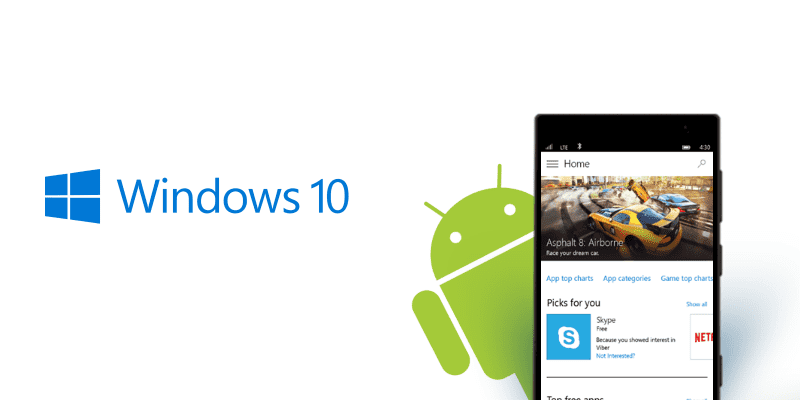Project Astoria, Microsoft’s “bridge” program to help Android developers bring their mobile apps to Windows, is no more, the company confirmed yesterday. One of four bridges unveiled at Microsoft’s Build developer conference last year, Astoria is being abandoned to avoid a “confusing” choice between the company’s other mobile-app bridge, the so-called “Islandwood” for iOS.
One of the reasons Microsoft is dropping Astoria is because of its acquisition of Xamarin, according to Windows Developer Platform vice president Kevin Gallo. Xamarin provides a platform that lets developers build native apps for multiple mobile operating systems without having to maintain multiple code bases.
By bringing Xamarin into its fold, Microsoft can help Universal Windows Platform developers “share common app code across Windows, iOS, and Android apps while still delivering fully-native experiences for each of the platforms,” Gallo noted in a blog post. Microsoft will, however, continue to support its iOS bridge, as well as its Web bridge for HTML-based and JavaScript-based apps and its Project Centennial bridge for Win32 and .NET-based apps.
Focus on Windows Bridge for iOS
Speculation about Astoria’s possible demise began picking up steam in November, when Microsoft announced that the bridge was “not ready yet.” The other shoe dropped with yesterday’s blog post by Gallo.
“We received a lot of feedback that having two bridge technologies to bring code from mobile operating systems to Windows was unnecessary, and the choice between them could be confusing,” Gallo said. “We have carefully considered this feedback and decided that we would focus our efforts on the Windows bridge for iOS and make it the single bridge option for bringing mobile code to all Windows 10 devices, including Xbox and PCs.”
However, a number of observers have pointed out that there are likely reasons beyond the Xamarin acquisition that persuaded Microsoft to put an end to Astoria. Bringing Google’s open source Android code to Microsoft could create potential legal problems and piracy risks, some have noted. Furthermore, putting the spotlight on iOS apps for Windows promises more premium Apple-flavored value for Microsoft, according to other observers.
Mixed Reactions
Reader comments on the Windows blog were split between those who welcomed Microsoft’s move and those who questioned the reason for Astoria’s end.
“You cancelled the Android bridge because ‘developers were confused’?” one commenter wrote. “That’s the most absurd thing I’ve heard all week. The rumors are you cancelled it because of technical issues + liability issues with people making unauthorized ports. In other words, money.”
Another commenter, however, said the update was great news.
“Android users need to understand that developers prefer iOS to Android even if Android has more users,” that reader noted. “The main reason is money, iOS makes up 75 percent of all mobile developer income. Other reasons include most developers prefer working with C++ over Java and because Android is too fragmented. What all this means is most apps/games that are available on both iOS and Android, are actually developed on iOS and ported to Android.”
Image Credit: Microsoft Windows Development Center.





![[Video] Samsung Teases ‘AI Home Experience’ Ahead of](https://loginby.com/itnews/wp-content/uploads/2025/03/1742985292_Video-Samsung-Teases-‘AI-Home-Experience’-Ahead-of-100x75.jpg)

